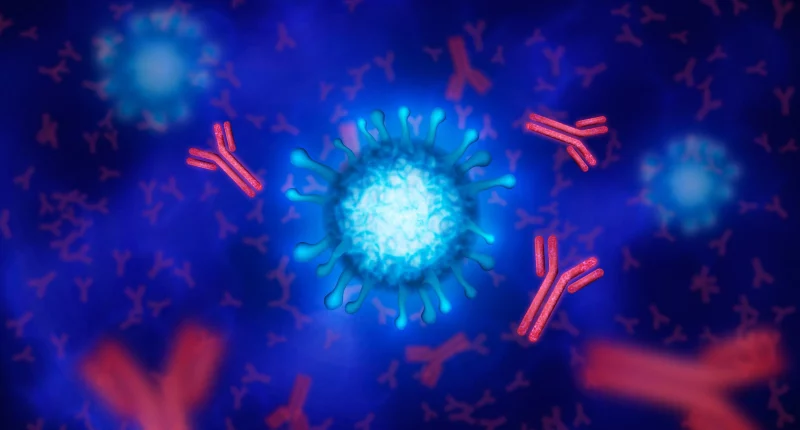Bacteroides are gram-negative, anaerobic bacteria frequently found in the human gastrointestinal tract. While they play an important role in maintaining gut health by fermenting complex carbohydrates, they may also pose a significant threat when they move beyond the intestines. Bacteroides infections typically occur in clinical settings, often as an outcome of trauma, surgical procedures, or underlying conditions that compromise the integrity of the gut barrier.
These infections can manifest as abscesses in various body sites, including the pelvis, abdomen, and soft tissues, and are notable for their ability to lead to polymicrobial infections with other bacteria. Due to their anaerobic nature, Bacteroides are challenging to treat and require antibiotics effective against anaerobes, often in combination with surgical drainage for optimal management.
Symptoms
Bacteroides infection symptoms vary depending on the infected site. Localized symptoms often show swelling, pain, and sensitiveness, usually seen in parts like the pelvis, abdomen, or soft tissues. Fever frequently accompanies abscess formation, indicating an inflammatory response and palpable or visible pus or drainage may develop as the infection progresses.
Systemic symptoms can include a general sense of malaise or discomfort, chills associated with fever, and extreme tiredness, reflecting the body’s response to systemic infection. Specific symptoms rely on the infection site; gastrointestinal symptoms like a sick feeling of the stomach, vomiting, diarrhea, or lower stomach pain may happen if the gastrointestinal tract is involved. Urinary symptoms like pain during urination, urgency, or increased frequency can indicate urinary tract involvement. In cases where the infection affects specific neurological sites, localized symptoms like weakness or sensory changes may also be present.
Prompt medical evaluation and medication are critical upon the onset of symptoms suggestive of Bacteroides infection, particularly in individuals with recent surgery or underlying immunocompromising conditions. Early medication can help prevent complications and ensure effective management of the infection.
Causes
Several causes contribute to the development of these infections:
- Gut Translocation: Breach or breakdown of the intestinal mucosal barrier allows Bacteroides bacteria to translocate from the gut lumen into sterile body sites. This can happen due to surgical procedures involving the pelvis or abdomen, traumatic injuries affecting the intestinal integrity, or conditions such as diverticulitis where mucosal integrity is compromised.
- Mixed Infections: Bacteroides are often part of polymicrobial infections, where multiple bacterial species coexist and synergize to cause infection. This is particularly common in intra-abdominal abscesses or soft tissue infections where anaerobic conditions favor their growth alongside other bacteria.
- Underlying Health Conditions: Individuals with immunocompromising conditions, like diabetes mellitus, malignancies, or chronic inflammatory diseases, are at increased risk. These conditions weaken the immune response, making them more susceptible to bacterial infections including those caused by Bacteroides species.
- Invasive Procedures: Any invasive medical procedure that disturbs mucosal barriers, like surgeries, catheterizations, or colonoscopies, can introduce Bacteroides bacteria into sterile body sites. Proper aseptic techniques and antibiotic prophylaxis are crucial in reducing this risk.
These causes help in both preventing and managing Bacteroides infections effectively, emphasizing the importance of maintaining gut barrier integrity and appropriate infection control measures in clinical settings.
Treatment
Bacteroides infection treatment involves a multifaceted approach tailored to the seriousness of the infection and the particular clinical presentation. Prompt initiation of therapy is crucial to prevent complications and decrease morbidity.
Firstly, antibiotic therapy forms the cornerstone of treatment. Given the anaerobic nature of Bacteroides, antibiotics effective against anaerobic bacteria are essential. Frequently used antibiotics include clindamycin, metronidazole, and beta-lactamase/beta-lactam inhibitor combinations like piperacillin-tazobactam and ampicillin-sulbactam. The choice of antibiotic depends on local resistance patterns and the seriousness of the infection. In severe cases or those involving resistant strains, combination therapy with two antibiotics may be necessary.
Secondly, surgical intervention plays a critical role, especially in cases where abscess formation or localized collections of pus occur. Surgical shrinkage or debridement helps to rule out the infectious focus, enhances antibiotic penetration, and reduces the bacterial load. This is particularly important in intra-abdominal infections or deep-seated soft tissue infections where complete eradication of the infection may not be achievable with antibiotics alone.
In addition to surgical intervention and antibiotics, supportive care such as intravenous fluids, pain management, and close monitoring of vital signs and laboratory parameters are essential components of treatment. Collaboration between infectious disease specialists and surgeons is often necessary to optimize treatment strategies, ensure appropriate antibiotic stewardship, and tailor therapy based on clinical and microbiological response. Regular reassessment and adjustments to treatment are crucial to achieving successful outcomes in managing Bacteroides infections.
Diagnosis
Diagnosing Bacteroides infection involves a combination of microbiological testing, clinical evaluation, and imaging studies.
Clinical evaluation is the initial step, focusing on the patient’s history, signs, and risk factors. Symptoms like pain, fever, swelling, or the presence of an abscess at specific sites (e.g., pelvic, abdominal) raise suspicion for Bacteroides infection. Individuals with a history of recent trauma, surgery, or immunocompromising conditions are also at higher chance and should be thoroughly assessed.
Microbiological testing is important for confirming the diagnosis. Samples obtained from suspected infection sites, like aspirates, blood, or tissue biopsies, are cultured under anaerobic conditions. Laboratory tests typically include:
- Molecular Methods: Polymerase chain reaction (PCR) techniques can be used for rapid and specific identification of Bacteroides DNA, enhancing diagnostic speed and accuracy.
- Anaerobic Cultures: Specimens are inoculated onto selective media and incubated in anaerobic conditions. Bacteroides species are identified based on their colony morphology, Gram stain characteristics, and biochemical tests.
- Antimicrobial Susceptibility Testing: To guide effective antibiotic therapy, susceptibility testing is performed on the cultured isolates, determining the best antimicrobial agents for treatment.
Imaging studies, like ultrasound, CT scans, or MRI, are valuable for visualizing abscesses or infected places, aiding in the diagnosis and guiding the requirement for surgical treatment. These imaging modalities help in assessing the extent of the infection and planning appropriate management strategies. Regular monitoring and repeat imaging may be necessary to evaluate the response to treatment.
Summary
Diagnosing Bacteroides infection involves clinical evaluation focused on symptoms and risk factors, particularly in patients with recent surgeries or immunocompromising conditions. Microbiological testing, including anaerobic cultures and molecular methods like PCR, confirms the presence of Bacteroides species and guides antibiotic therapy through susceptibility testing.
Imaging studies such as ultrasound or CT scans help visualize abscesses and assess infection extent, crucial for surgical planning if needed. Treatment combines antibiotics effective against anaerobes (e.g., metronidazole, clindamycin) with surgical drainage to eradicate localized infections. Close monitoring and collaboration between specialists optimize outcomes, ensuring effective management of Bacteroides infections and reducing complications in clinical practice.








